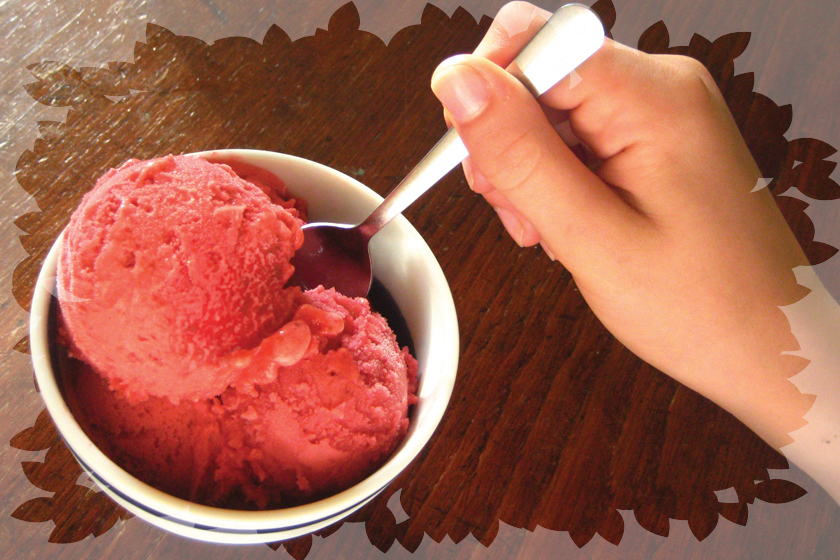While on holiday in the Gambia one hot December afternoon, I was inspired by the refreshing home-made “ices” found in many West African countries to try my hand at making something a little more sophisticated, a fruit sorbet. “Ice” is made by pouring homemade hibiscus drink (ginger and baobab drinks are also popular) into small plastic bags which are then tied into a knot at the top to seal them, and left overnight in a freezer to solidify. Just like a lollipop but without the stick, you suck at the frozen solid after making a hole in the plastic bag. Simple and ingenious but not great on presentation.
Because of its high water content, watermelon seemed the perfect fruit with which to experiment. Even though it was December and no longer the rainy season, there was certainly no shortage of the fruit – in fact, quite the opposite.
I set about blending half a very large watermelon after peeling it and painstakingly removing the thousand and one little black pips it contained. I didn’t have a recipe, but was confident that trial and error would see me through. Therefore, I relied on inspired guesswork to estimate the amount of fruit and sugar to use.
I knew that I had to let the mixture set first, then break it up and blend again, but I wasn’t sure how many times I would need to repeat this process. The next day, I served my version of watermelon sorbet to my nieces and nephews, and I’m pleased to say it was a real success.
A granita is so called because of the ice crystals it contains, which are almost like grains of ice. Sorbets, on the other hand, are very smooth, more like the consistency of ice cream
Fast forward a few years and I found out, after serving my sorbet up to a different audience, that what I had been calling a sorbet was actually a granita. A granita is so called because of the ice crystals it contains, which are almost like grains of ice. Sorbets, on the other hand, are very smooth, more like the consistency of ice cream despite being made entirely with water and fruit.
The granita quality of my fruit sorbet was probably down to the fact I wasn’t using an ice cream maker, which churns the mixture all the time as it freezes, thus preventing it forming ice crystals.
So you are more likely get a granita if you use a low tech, fork, whisk or hand blender but for a smooth sorbet you need an ice cream maker or other more specialist equipment. I’m reliably informed that to get the creamy ice cream texture, you need a bit of help from an extra ingredient, glucose.
All said and done whether you call it a water ice, granita or sorbet, it’s definitely the best way I know to cool down on a hot day. What they all have in common, a mix of fruit and water, is what gives them their refreshing coolness. The definition below certainly seems to support this view, and shows how much sorbet has evolved from its original conception.
sorbet (n.)
1580s, “cooling drink of fruit juice and water”, from French sorbet (16c.), probably from Italian sorbetto, from Turkish serbet (see sherbet). Perhaps influenced in form by Italian sorbire “to sip”. Meaning “semi-liquid water ice as a dessert”, first recorded in 1864.


1 Comment
Hello
This is a Really very interesting and detailed article, thanks for sharing.
Add Comment